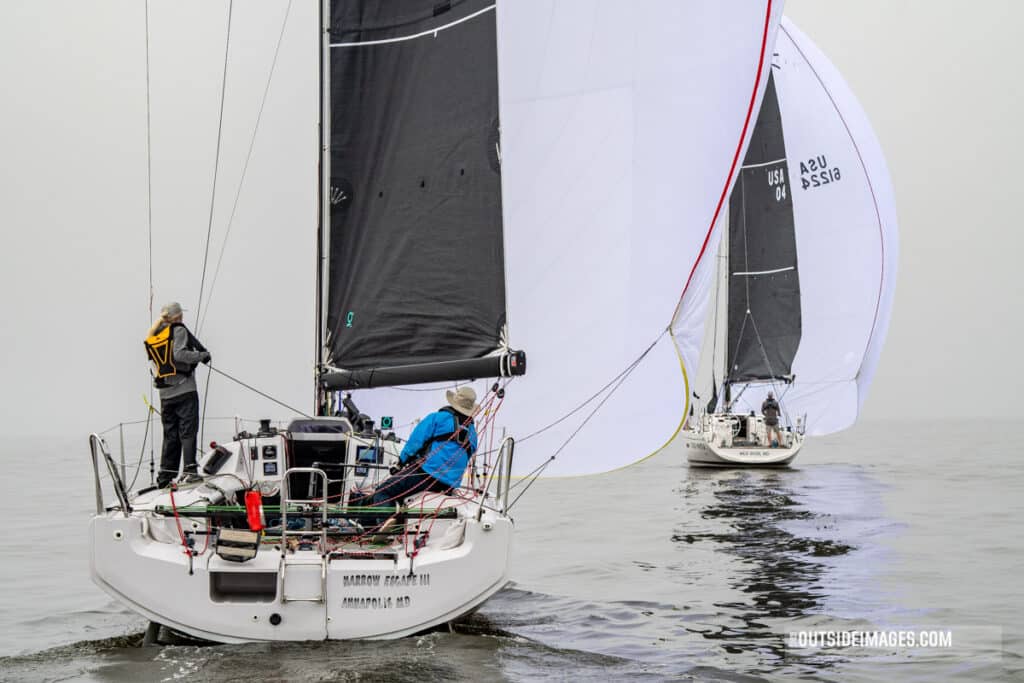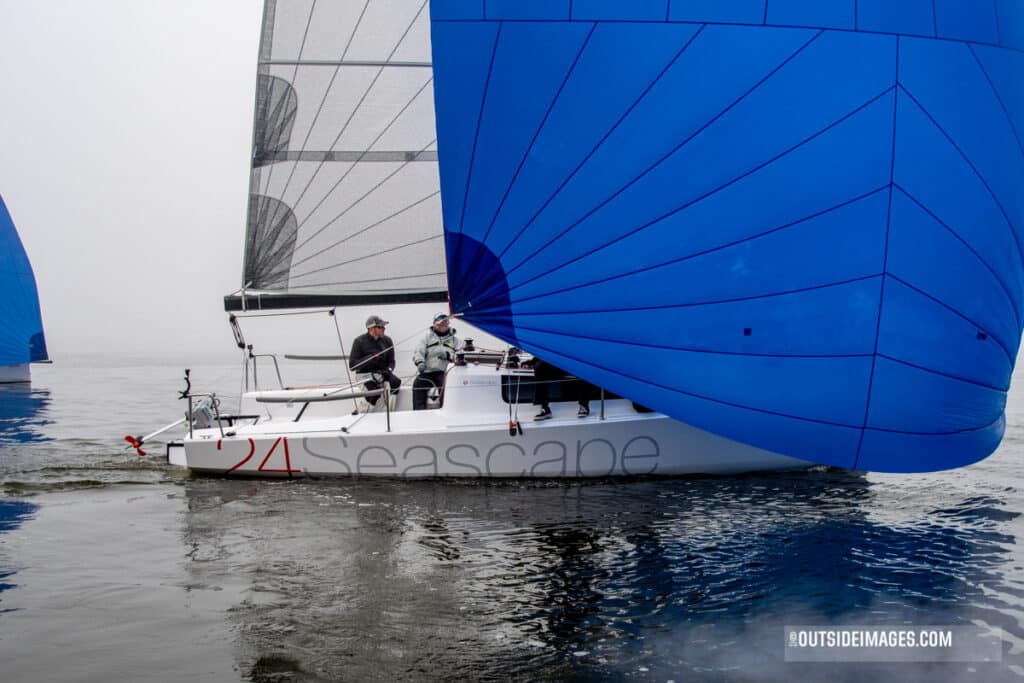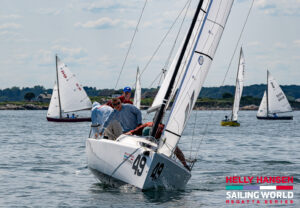
The inclusion of a distance-race offering was hatched in earlier years of the Helly Hansen Sailing World Regatta Series, with a goal of getting idle boats and crews off the dock, on to the water for one day, and into the party after racing. Simple enough, right?
Right, but is one day ever really enough? No way. If you’re going to dial up the crew list, order the sandwiches and strike the dodger, you might as well get another day of fun, right?
Right. At all Helly Hansen Sailing World Regatta Series stops this year, organizers are offering two days of distance racing (or what could be more aptly called long-course buoy racing, as there is no overnight element), where competitors enjoy a daylong race that tests the boat and its crew on all points of sail, across a variety of winds and conditions.
One of the best parts of a long-course race is that when the Sailing Instructions state the warning signal will be at 1000, you can bet you’ll be starting your wrist top timer at 1000. There will be no race committee chatter about whether the windward mark is perfectly in place for an erratically shifting morning breeze. Nope. with long-course racing, when you get the course, you know your marks, you get set, you go.
Managing the long-course action this year, as he did in 2022, will be Annapolis-based race officer Bruce Bingman. The plan, he says, is to start the long-course fleet 5 to 10 minutes before the big-boat one-designs on his circle, to send them on a 6- to 16-mile random-leg challenge and finish them right where they started—or perhaps somewhere else. We checked in with Bingman to pick his brain on what to expect and how best to conquer the unpredictable Chesapeake Bay.
What sort of courses can our distance-race competitors expect?
Of course, it all depends on the wind strength and direction, but the way I normally do it is to send all the boats up to the same weather mark, maybe a mile or so directly upwind, and then after that, judging that we’ll set up near the red bell buoy off the entrance to the Severn River——about 3 miles out from harbor—I’d probably send them to Eastern Shore, around a few markers there with some beats, headsail reaches, some downwind work, and a jibe or two. Then come back around a box; roughly speaking so we get all compass legs if at all possible. I always try and think of interesting courses that we could do and I typically set them assuming that we have the prevailing southerlies or the post-frontal northerlies.
How many times can we expect to cross the current? Which can be a big deal.
At least twice. My intent is always to give people an interesting race. To get to the Eastern Shore you’ll have to cross it going over and obviously again coming back. I will, however, set up a few courses for the lighter breeze where they won’t cross the current because even on a light current day the current will run up to a knot in the center of the bay. If there’s been heavy rain, up in Pennsylvania or Northern Maryland, and they open the flood gates, you’ll get 3.5 knots of current running down the center of the bay.

Can you share some of your wisdom as it pertains to distance racing in this part of the bay?
I always run with both a knot meter and a GPS, as well as the boat’s compass. You want to make sure you’re optimizing all the way around. On a distance race, you always have to be thinking about optimizing VMC—that’s velocity down the course, not necessarily velocity directly to the mark. Part of the thinking of that is that if it’s long enough of race and you know the wind is going to shift during the race, and if you’re beating to the mark and another competitor has been just cracked off and going faster than you, they will be further down course, even though they may not be directly downwind of the mark. They’ll be further toward the mark than you are, so when the windshift comes, they can take advantage of the shift. They’ll either tack and lay the mark or be lifted toward the mark. I’m very much a VMC racer provided it’s long enough. You can’t do that on a one or two-mile leg, but once it gets over 2 miles, you really need to be thinking about what the wind will do. Look at clouds—obviously you want to sail to the dark cloud. Try to improve your chances the longer the distance gets. The shorter the leg, the more you need to focus on VMG, and that’s all about optimizing sail trim and boatspeed. When it comes to distance racing, I try never to pinch unless I have a very good reason.
What are your thoughts on dealing with the current?
The further you get to the center of the bay, the strong the current is, so you don’t want to get caught short going around a mark in the middle of the bay. That last tack of 50 feet will cost you a lot more than over-standing by 200 feet of the mark. If I’m tacking for the Hackett’s Point can, for example, and the current is flowing down the bay and I’m in light northerly (going up the bay), I will wait until the thing is 45 degrees off my transom before I tack.
How about some more tips on racing in Annapolis; If you were racing, what would be your priorities?
Lots of water. Not beer, until after the race. I spend a lot of time looking at the weather and being really confident on which sails I will want to use and which ones come off the boat. For sure you want to make sure you’re prepped and have an outboard lead of some sort so you have a better slot to control for headsail reaching because you will almost certainly do some headsail reaching. If you’re rounding the mark and rigging up outboard leads, you’re too late. That’s not fast. If I’m going to run a staysail, I’ll make sure that’s set up and ready to go. Change sheets should be ready and available. Practice. If you can, before the race, get the crew together and practice some headsail changes and a spinnaker peel. It’s an opportunity to get out there and shake the cobwebs.









